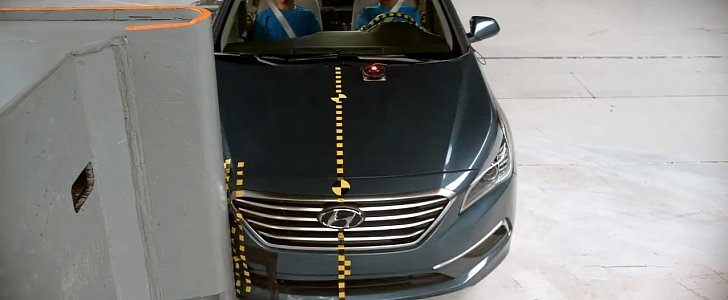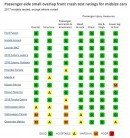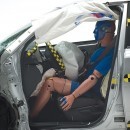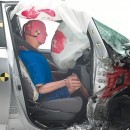The Insurance Institute for Highway Safety is known for not playing around, crashing cars just for the hell of it. With the small overlap front test, the IIHS sends the vehicle into a barrier at 40 mpg with 25 percent of the front end overlapping the barrier on the driver’s side. And guess what? Some automakers took note of the “driver’s side” part, ignoring the passenger’s side.
Yours truly first reported about this matter in June 2016, when the Insurance Institute tested seven sport utility vehicles for passenger side crashworthiness. Briefly put, only the 2016 Hyundai Tucson earned the “good” rating, with the remainder of the test group evaluated as “acceptable,” “marginal,” and “poor.”
Now that the passenger-side impact has been introduced to the Insurance Institute for Highway Safety’s testing protocol, you can bet that fewer automakers will try and save money by cutting corners in the crashworthiness department. And similarly to last year, the test group crashed on this occasion polarized the IIHS with mixed results. In total, 13 vehicles were crash-tested.
A “good” or “acceptable” passenger-side rating is required for a vehicle to qualify for the 2018 Top Safety Pick+ award, and reassuringly, 10 of the 13 vehicles tested were deemed “good” by the Insurance Institute’s safety boffins. These are the Ford Fusion, Honda Accord, Lincoln MKZ, Subaru Legacy, Subaru Outback, Hyundai Sonata, Mazda6, Nissan Altima, Nissan Maxima, and Toyota Camry.
In the “acceptable” corner, the soon-to-be-refreshed Volkswagen Jetta failed to impress. The biggest offenders from IIHS’ view, however, are the “marginal”- rated Volkswagen Passat and Chevrolet Malibu.
"The midsize cars we tested didn't have any glaring structural deficiencies on the right side," declared senior research engineer Becky Mueller. "Optimizing airbags and safety belts to provide better head protection for front-seat passengers appears to be the most urgent task now." That being the case, it will be interesting to see if automakers will pay attention to the IIHS’ tips.
Now that the passenger-side impact has been introduced to the Insurance Institute for Highway Safety’s testing protocol, you can bet that fewer automakers will try and save money by cutting corners in the crashworthiness department. And similarly to last year, the test group crashed on this occasion polarized the IIHS with mixed results. In total, 13 vehicles were crash-tested.
A “good” or “acceptable” passenger-side rating is required for a vehicle to qualify for the 2018 Top Safety Pick+ award, and reassuringly, 10 of the 13 vehicles tested were deemed “good” by the Insurance Institute’s safety boffins. These are the Ford Fusion, Honda Accord, Lincoln MKZ, Subaru Legacy, Subaru Outback, Hyundai Sonata, Mazda6, Nissan Altima, Nissan Maxima, and Toyota Camry.
In the “acceptable” corner, the soon-to-be-refreshed Volkswagen Jetta failed to impress. The biggest offenders from IIHS’ view, however, are the “marginal”- rated Volkswagen Passat and Chevrolet Malibu.
"The midsize cars we tested didn't have any glaring structural deficiencies on the right side," declared senior research engineer Becky Mueller. "Optimizing airbags and safety belts to provide better head protection for front-seat passengers appears to be the most urgent task now." That being the case, it will be interesting to see if automakers will pay attention to the IIHS’ tips.











